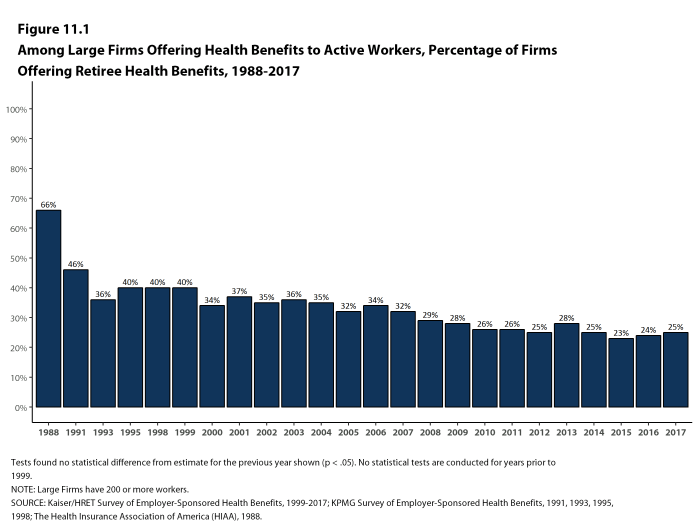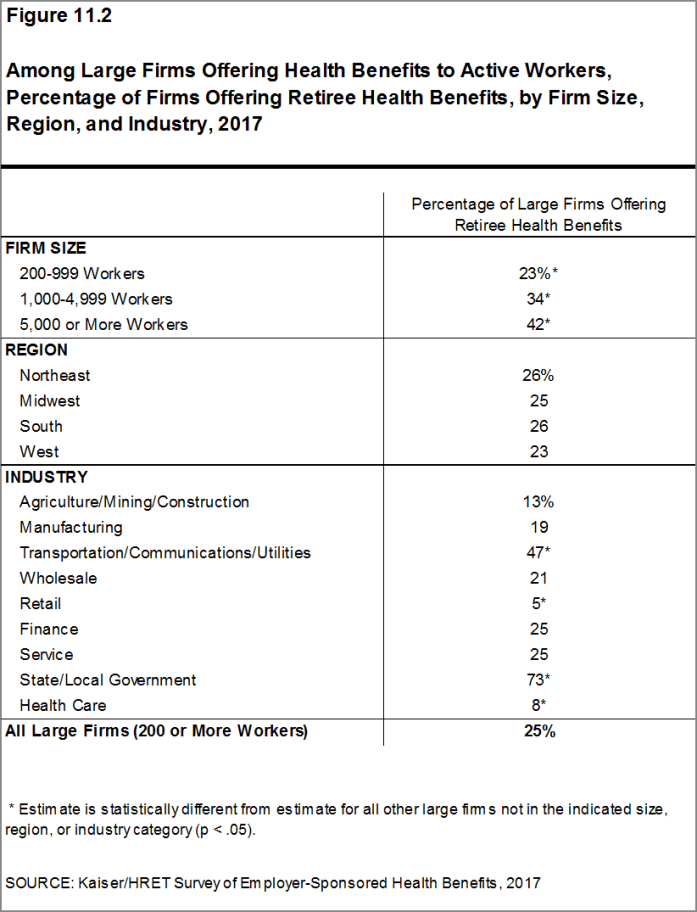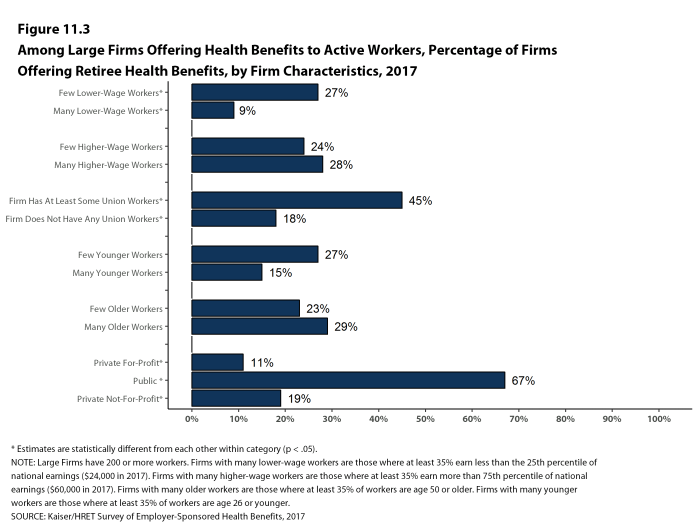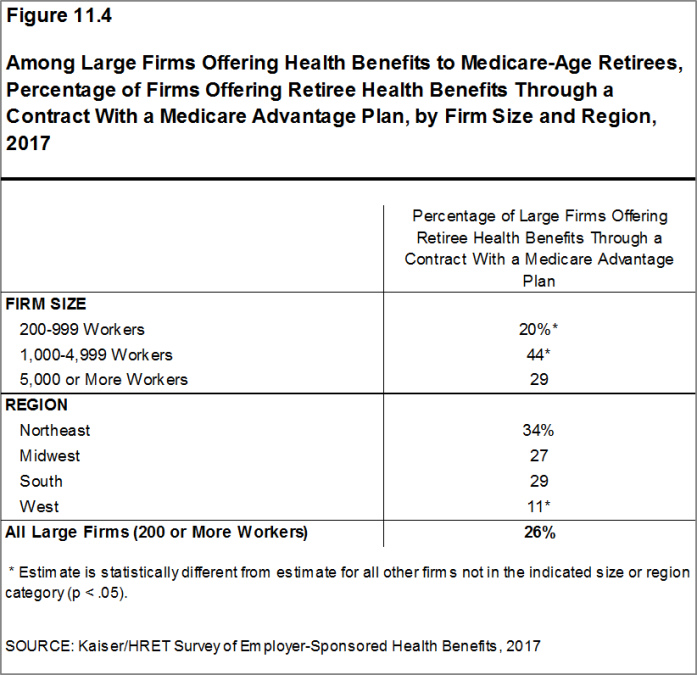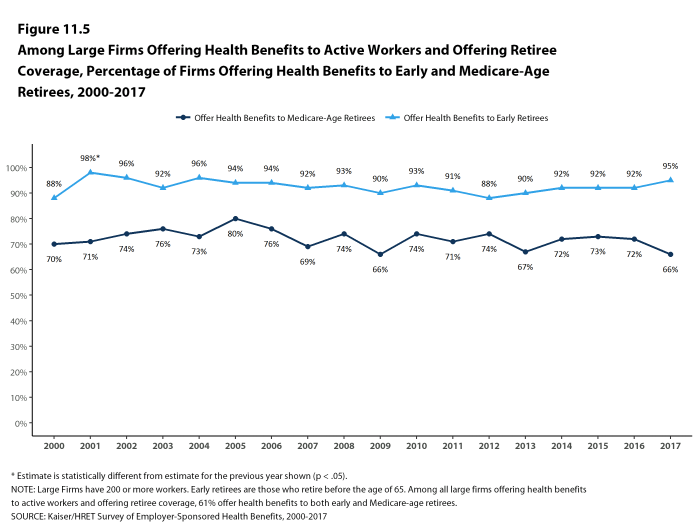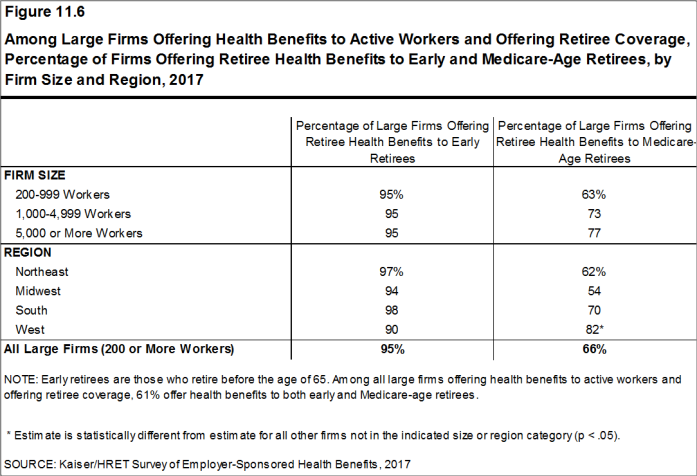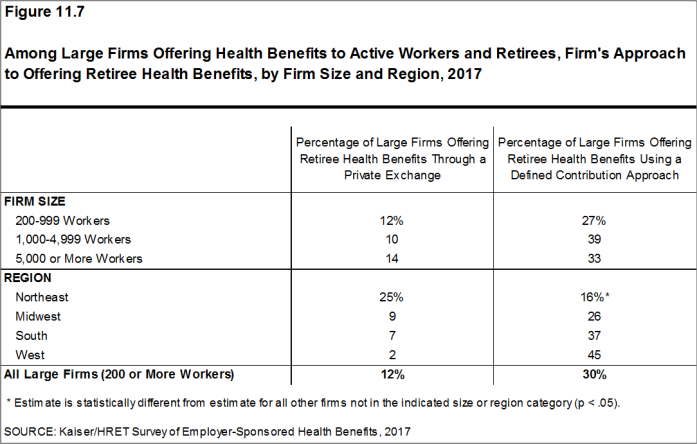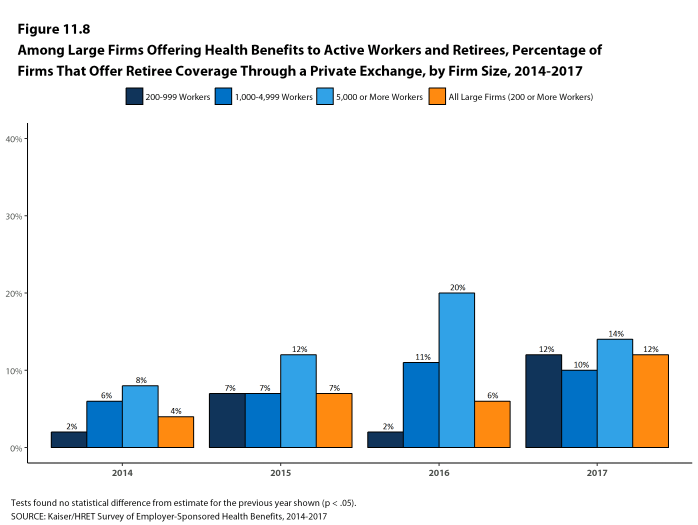2017 Employer Health Benefits Survey
Section 11: Retiree Health Benefits
Retiree health benefits are an important consideration for older workers making decisions about their retirement. Health benefits for retirees provide an important supplement to Medicare for retirees age 65 or older. Over time, the percentage of firms offering retiree coverage has decreased. This survey asks retiree health benefits questions only of large firms (200 or more workers).
EMPLOYER RETIREE BENEFITS
- In 2017, 25% of large firms that offer health benefits to their workers offer retiree coverage, similar to recent years [Figure 11.1]. However, there has been a downward trend in the percentage of firms offering retirees coverage, from 32% in 2007 and 40% in 1999.
- Retiree health benefits offer rates vary considerably by firm characteristics.
- Among large firms offering health benefits, firms with 200-999 workers are less likely to offer retiree health benefits than firms with 1,000 or more workers (23% vs. 36%) [Figure 11.2].
- The share of large firms offering retiree health benefits varies considerably by industry. State and local governments (73%) and transportation/communication/utilities industries (47%) have higher than average offer rates, while retail (5%) and health care (8%) have lower than average offer rates [Figure 11.2].
- Among large firms offering health benefits, the share of public firms offering retiree benefits (67%) is higher than the shares of private for-profit firms (11%) or private not-for-profit firms (19%) offering retiree benefits [Figure 11.3].
- Large firms with at least some union workers are more likely to offer retiree health benefits than large firms without any union workers (45% vs. 18%) [Figure 11.3].
- Twenty-six percent of large firms offering retiree benefits contribute to those benefits through a contract with a Medicare Advantage plan. Firms with 1,000-4,999 workers are more likely to contribute to retiree benefits through a contract with a Medicare Advantage plan than other large firms (44% vs. 21%) [Figure 11.4].
Figure 11.1: Among Large Firms Offering Health Benefits to Active Workers, Percentage of Firms Offering Retiree Health Benefits, 1988-2017
Figure 11.2: Among Large Firms Offering Health Benefits to Active Workers, Percentage of Firms Offering Retiree Health Benefits, by Firm Size, Region, and Industry, 2017
Figure 11.3: Among Large Firms Offering Health Benefits to Active Workers, Percentage of Firms Offering Retiree Health Benefits, by Firm Characteristics, 2017
EARLY RETIREES AND MEDICARE-AGE RETIREES
- Among large firms offering retiree health benefits, most firms offer to early retirees under the age of 65 (95%). A lower percentage (66%) of large firms offering retiree health benefits offer to Medicare-age retirees. These percentages are similar to those in recent years [Figure 11.5].
- Among all large firms offering retiree health benefits, 61% offer health benefits to both early and Medicare-age retirees.
Figure 11.5: Among Large Firms Offering Health Benefits to Active Workers and Offering Retiree Coverage, Percentage of Firms Offering Health Benefits to Early and Medicare-Age Retirees, 2000-2017
PRIVATE EXCHANGES
- Private exchanges have received considerable attention over the last several years. They are typically created by a consulting company, broker, or insurer, and are different than the public exchanges created under the Affordable Care Act (ACA). Private exchanges allow employees or retirees from multiple companies to choose from a larger number of health benefit options than one firm would generally provide. Twelve percent of large firms offering retiree health benefits report they offer benefits through a private exchange, similar to the percentage last year (6%) [Figure 11.7]. For more information on the use of private exchanges for active employees, please see Section 14.
- Thirty percent of large firms offering retiree benefits make a defined contribution for retiree health benefits [Figure 11.7]. A defined contribution is a set dollar amount that the retiree can use to purchase a retiree health plan they choose.
Figure 11.7: Among Large Firms Offering Health Benefits to Active Workers and Retirees, Firm’s Approach to Offering Retiree Health Benefits, by Firm Size and Region, 2017

